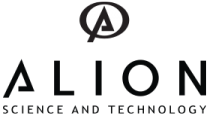Global Retro Reflective Textiles Markets, 2021-2022 & 2028: Opportunities in Product Innovations & Rising Demand from Various End-use Industries - ResearchAndMarkets.com
The "Retro Reflective Textiles Market Forecast to 2028 - COVID-19 Impact and Global Analysis By End Users and Material" report has been added to ResearchAndMarkets.com's offering.
The retro reflective textiles market is expected to grow from US$ 2,872.8 million in 2021 to US$ 4,139.8 million by 2028; it is estimated to grow at a CAGR of 5.4% from 2021 to 2028.
Primary and secondary retro reflective textiles are used in the cosmetic industry to protect the products from damage. The growing cosmetic industry propels the demand for retro reflective textiles. Moreover, the increasing trend of green packaging, especially in developed regions such as Europe, has increased the demand for flexible retro reflective textiles, contributing to the overall market growth.
Based on material, the global retro reflective textiles market is segmented into tetoron cotton, polyester, aramid, and others. The polyester segment held the largest share of the market in 2020; however, the tetoron cotton segment is expected to register the highest CAGR over the forecast period. Polyester is made from oil/petrochemical, and cotton is obtained from natural cotton plants. Tetoron Cotton is a polyester/cotton blend.
It is used as retro reflective material for safety. It uses the principle of retro-reflection, which returns the light to the original light source when the light hits its surface. Reflective materials, such as tetoron cotton, are used for clothing. It is made of substrate, composite adhesive, reflective layer, and glass beads. It is widely used for outdoor safety reflective products, such as safety equipment, safety uniforms, work clothing, and sanitation clothing.
The global retro reflective textiles market is segmented into five main regions - North America, Europe, Asia Pacific (APAC), Middle East & Africa (MEA), and South and Central America. In 2020, Asia Pacific accounted for the largest share of the market. Many Asia Pacific countries, such as China and India, have the world's fastest-growing population.
The construction industry is one of the rapidly growing industries in the region. The growing infrastructure in the developing countries and the increased housing in the region drive the growth of the retro reflective textiles market.
Moreover, the high growth of economic activities has led to an increased demand for transportation driven by applications, such as e-commerce. Therefore, the growth in the transportation end-use industry in Asia Pacific has propelled the demand for retro reflective textiles.
Impact of COVID-19 Pandemic on Retro Reflective Textiles Market
Various governments imposed restrictions to control the spread of SARS-CoV-2 infection. The retro reflective textiles market was severely affected due to the shutdown of manufacturing units and disruptions in supply chains. There was a decline in infrastructure investments which hampered the growth of the global retro reflective textiles market.
However, the current market situation is improving, as citizens of many nations are fully vaccinated, and the manufacturers are permitted to operate at full capacity. These factors are also expected to drive the growth of the retro reflective textiles market over the forecast period.
Key Market Dynamics
Key Market Drivers
- Rising Demand from Various End-use Industries
Key Market Restraints
- Lack of Awareness in Developing Countries
Key Market Opportunities
- Product Innovation
Company Profiles
- 3M
- Daoming Optics and Chemical Co. Ltd
- Hangzhou Chinastars Reflective Material Co.Ltd
- Huangshan Xingwei Reflectorized Material Co. Ltd
- Promosty
- Ps Enterprises
- Shelby Ltd
- Swicofil AG
- Unitika Sparklite Ltd.
- V-Reflex Reflective Material Co. Ltd.
For more information about this report visit https://www.researchandmarkets.com/r/8dsg0a
View source version on businesswire.com: https://www.businesswire.com/news/home/20220527005211/en/



